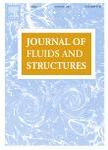版权所有:内蒙古大学图书馆 技术提供:维普资讯• 智图
内蒙古自治区呼和浩特市赛罕区大学西街235号 邮编: 010021

作者机构:Korea Adv Inst Sci & Technol KAIST Dept Aerosp Engn 291 Daehak Ro Daejeon South Korea
出 版 物:《JOURNAL OF FLUIDS AND STRUCTURES》 (J. Fluids Struct.)
年 卷 期:2025年第133卷
核心收录:
学科分类:080704[工学-流体机械及工程] 080103[工学-流体力学] 08[工学] 0807[工学-动力工程及工程热物理] 0802[工学-机械工程] 0801[工学-力学(可授工学、理学学位)]
基 金:Unmanned Vehicles Core Technology Research and Development Program through the National Research Foundation of Korea (NRF) Unmanned Vehicle Advanced Research Center (UVARC) - Ministry of Science and ICT, the Republic of Korea [2020M3C1C1A01083415]
主 题:Ornithopter Flapping-wing Flexible wing Unsteady aerodynamics Fluid-structure interaction Flight dynamic simulation
摘 要:This study presents an efficient numerical simulation framework for analyzing the flight dynamics of bird-inspired ornithopters in forward flight. The framework integrates a modified Unsteady Vortex Lattice Method (UVLM) with a Multi-Flexible-Body Dynamics (MFBD) model to simulate the Fluid-Structure Interaction (FSI) that occurs during the flapping flight. The UVLM is enhanced with a Pseudo-Leading-Edge Vortex (PLEV) model and an Adaptive Wake-Shedding (AWS) scheme to address limitations related to the leading edge vortex and spanwise wake-shedding. Additionally, the structural model of the ornithopter s flexible main wing is modeled using a modal-based reduced-order model generated through component mode synthesis. The framework is validated through wind tunnel tests on rigid and flexible wing models, demonstrating errors of 10 % in predicting mean lift and thrust forces. The ORNithopter Integrated Simulation Program (ORNISP), developed as a MATLAB App, is utilized to perform a flight dynamic simulation under free-flight conditions. The trim conditions for a forward flight of an ornithopter prototype named KRoFalcon (KAIST Robotic Falcon) are estimated. The simulation results show errors within 7 % for flight speed and angle of attack compared to flight test data. Additionally, the simulation results under free-flight and restricted degrees of freedom conditions are compared, and it shows that the flight simulation with restricted heaving and pitching can overestimate the aerodynamic forces. The proposed FSI simulation framework shows more efficient computational time than the FSI simulation using computational fluid dynamics and structural dynamics solvers, ensuring sufficient fidelity in aerodynamic force estimation.